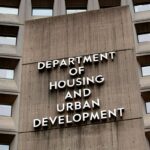 In a new Perspectives Blog post by Fannie Mae authors Saif Amin, Fannie Mae’s Senior Director of Climate Impact Strategy, and Li-Ning Huang, Principal of Market Research, climate change presents both immediate and long-term challenges to everyone involved in Real Estate, including renters.
In a new Perspectives Blog post by Fannie Mae authors Saif Amin, Fannie Mae’s Senior Director of Climate Impact Strategy, and Li-Ning Huang, Principal of Market Research, climate change presents both immediate and long-term challenges to everyone involved in Real Estate, including renters.
As the frequency and intensity of weather-related events increases, Fannie Mae is working to advance equitable and sustainable access to homeownership and quality, affordable rental housing, and working to further their knowledge on climate change response and the affect it has on the homeowners and renters they serve.
Recently, Fannie Mae refreshed and republished its 2020 National Flood Survey with the aim of expanding their understanding of consumer awareness and attitudes towards flood risk, and government-backed flood insurance, to see how results may have changed in the last three years.
In the update, they also expanded the sampling of Black and Hispanic/Latino households to better understand their views on these important topics. Nearly 4,000 people nationwide responded to the survey, residing in areas across three flood-risk categories: high-risk (100-year flood zone/Special Flood Hazard Area [SFHA]), medium-risk (mid-risk; 500-year flood zone), and others.
The key findings from our 2022 survey were:
1) Improving awareness remains a key priority—a significant share of consumers have a poor understanding of the flood risk of their residences.
- Despite personal flooding experience, overall awareness of flood risk is low, particularly for those in high-risk zones.
- Medium-risk respondents have a mixed understanding of flood insurance and their coverage.
- There is room for improvement regarding consumer awareness of the Federal Emergency Management Agency’s (FEMA) National Flood Insurance Program (NFIP) and Risk Rating 2.0.
2) Consumers are worried about flood insurance affordability and rising risk—the stated level of insurance adoption seems low and consumers are concerned about cost.
- Respondents expressed both a desire to mandate insurance in high-risk zones and rising concern with increases in flood insurance premiums impacting affordability.
- Consumers are concerned about homeownership costs and home value declines due to flood risk.
- Consumers are worried about the impact of climate-related events.
3) Many opportunities exist to increase awareness and knowledge—there is clearly some appetite and willingness to pay for mitigation of the risks.
- Some consumers are taking steps to learn about and minimize flood risks, though few say searching for information is very easy.
- Consumers want information about their current risk, and flood disclosures could help.
- Consumers view government agencies as the most trusted source of information.
Despite personal flooding experience, overall awareness of flood risk is low, particularly for those in high-risk zones.
Fannie Mae’s survey found that one-in-eight respondents have experienced a flood at their current residence, with half reporting experiencing flooding in the past five years. Prior flooding experience was more prevalent among Black respondents, with one-in-five Black respondents (20%) reporting they have had a flood at their current residence. In comparison, 14% of Hispanic/Latino respondents and 13% of White respondents reported the same.
This higher degree of personal experience with flooding might help explain why Black respondents, according to the survey, perceived a higher risk of flooding in their community and their homes relative to others.
The authors continued, saying that consumer awareness of FEMA’s role in identifying flood risk zones was approximately 80% overall, and nearly 90% for high-risk respondents. However, this awareness of FEMA’s role did not translate into accurate flood zone identification, as most respondents in the survey were unable to correctly identify the flood risk zone in which they reside. Approximately 40% of those in high-risk zones and only 5% of those in medium-risk zones correctly identified their homes as located in those risk zones. These results were similar to the results from 2020, indicating that significant work remains to improve individuals’ understanding of their own flood risk.
Click here to read the rest of the author’s findings from Fannie Mae.





